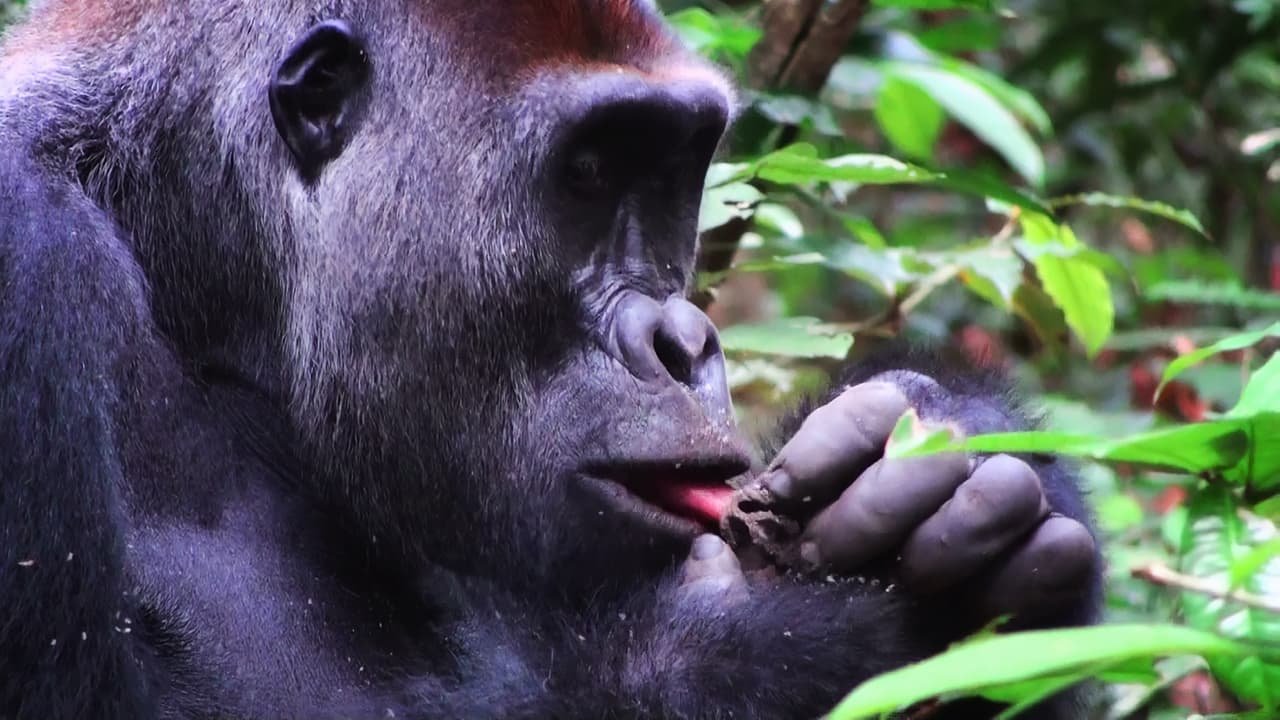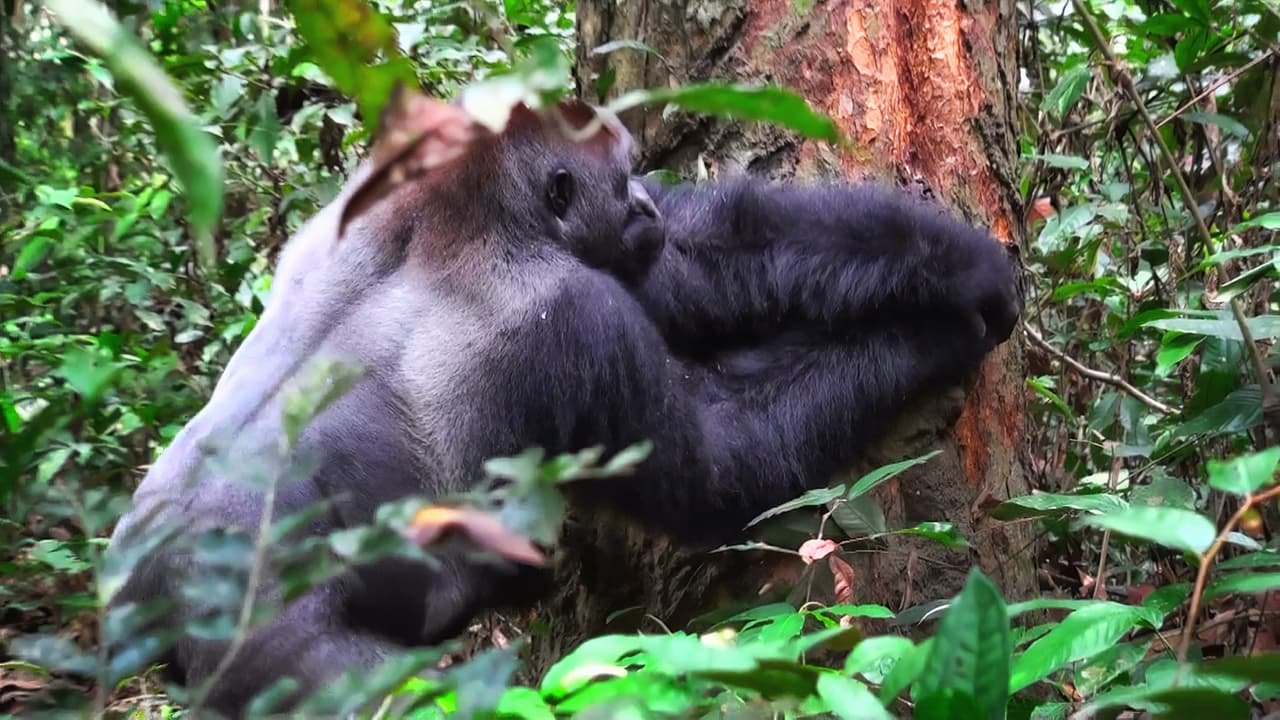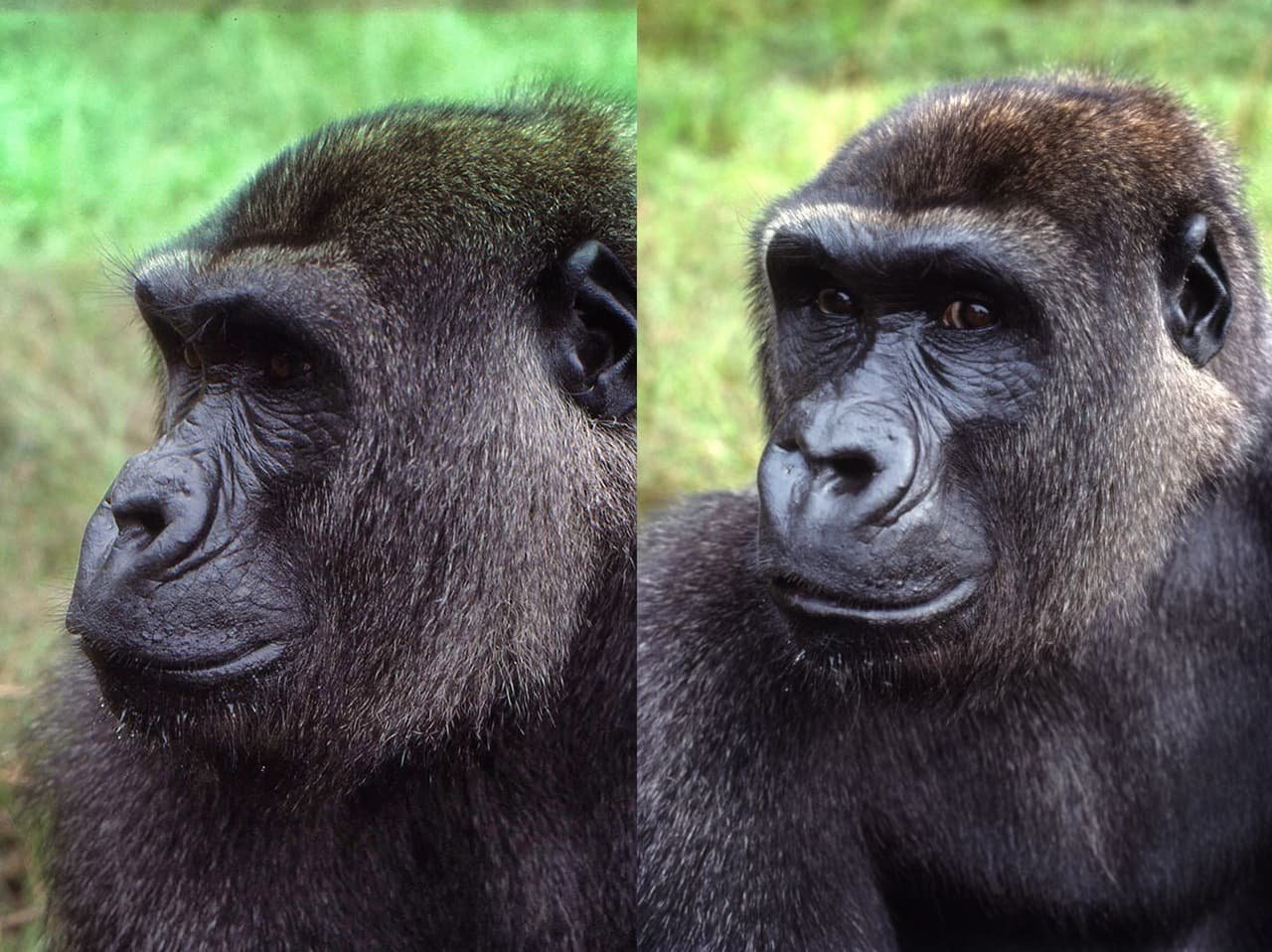
Buka taps and licks termites. Mondika, Congo. Photo by Ian Redmond
In this article, Ian Redmond—Head of Conservation for Ecoflix and Policy Advocate for The Born Free Foundation—discusses how endangered species affect wider ecosystems, near and far, and how undervalued this understanding is.
There’s a species of nut tree in Gabon that gorillas love.
It first came to the attention of botanists when a primatologist, Dr. Liz Williamson, asked them what it was that her study animals were eating. The botanists had no idea and, to honour her role in discovering it, named the species Cola lizae.
In parts of the gorillas’ forest it is the dominant tree species, and yet it seems to be largely ignored by elephants and other frugivores. Gorillas are the main, if not the only, seed dispersal agent. Seeds germinate better when they have passed through a gorilla, especially when they are deposited around a night nest. Gorillas like to sleep in clearings or in small trees whose branches are folded into a sleeping platform; either way, it provides germinating seeds with a light gap in the forest and a pile of nutrient-rich manure far from the parent plant.
Thus, the continued existence of this kind of nut tree hinges on the presence of a healthy population of Western Lowland Gorilla, Gorilla gorilla gorilla, a Critically Endangered Species.

Buka uses two hands and a foot to break a termite nest, Mondika, Congo. Photo by Ian Redmond
I don’t know whether any entomologist has studied which species of insect feed on the leaves, fruit, bark or roots of Cola lizae but every one of those species, also depends on the gorillas (to say nothing of the species-specific nematodes and other micro-organisms).
Insectivorous birds, some of them migratory species on their way to or from the UK (such as cuckoos, swifts and swallows) will feed on these insects and clearly owe at least part of their diet to gorillas.
Pick any endangered species on the IUCN Red List and you will find similar inter-dependencies, though many have yet to be described by science. That’s why ecology is such an exciting science!

Seeds germinate in gorilla dung, Nigeria.
Every day, the chloroplasts in the leaves of Cola lizae and indeed all the trees in the Congo-Guinean rainforest belt use sunlight to sequester and store carbon and release the oxygen that we and all animals need to live. Once a contiguous belt of forest from Senegal to the Albertine Rift, it is now more of a macramé belt fragmented into patches by agriculture, mines, roads, railways, and pipelines.
Until the climate crisis, trees had mainly been seen as a source of timber or an obstacle to be cleared out of the way for human activity. Now we know better and value trees as allies in the prevention of climate breakdown, and yet deforestation continues apace. But it is not just about carbon!
The leaves of tropical rainforest trees in Amazonia, Africa and South/Southeast Asia emit volatile organic compounds – chemicals that help seed raindrops from water vapour, forming clouds over forests and generating rainfall. The daily pulsing of tropical downpours in rainforests build up weather systems that water crops all over the world, fill aquifers and generate hydroelectricity.
And yet not a penny of the price of a bottle of wine, loaf of bread or unit of electricity goes to protect endangered species whose daily activities enhance these ecosystem services.
Our current economic thinking regards nature as an ‘externality’. Fortunately, a new economic paradigm is in the offing, elaborated by Ralph Chami and his colleagues, which values living nature through payment for ecosystem services and recognises the role of keystone species such as elephants, apes and whales.

Think about what they do – day in, day out – that benefits us all.

Ecoflix is jointly owned by The Ecoflix Foundation US and The Ecoflix Foundation UK. Ecoflix Foundation US is a registered 501(c)(3) in the United States of America. 501(c)(3): C2568417. Registered address: 24730 Long Valley Road, Hidden Hills, LA, CA 91302 USA Ecoflix Foundation UK is a registered charity (number 1200441). Registered address: Aston House, Redburn Road, Newcastle Upon Tyne, NE5 1NB